TABLE OF CONTENTS
How can you tell when to harvest weed? As the days get shorter and your plants get bigger, you need to prepare to harvest your mature flower buds. But how do you know when they are at their peak freshness? There is a short time window when cannabis flowers should be harvested.
Harvesting weed too early can produce buds with a weaker potency, flavor, and aroma. Harvesting too late can lead to reduced THC potency and buds that induce sedation. Our cannabis harvest guide shows you exactly how to get your harvesting timing right.
How Long Does it Take to Grow Cannabis from Seed to Harvest?
How long do you have to wait to harvest after you planted your cannabis seed? It depends on a variety of factors including the strains genetics and growing environment. These elements can determine the rate of flower bud maturation.
In addition, the buds may mature all at once, from top to bottom, or outside the canopy and then within. Generally, buds that have the most exposure to light mature quicker than ones that do not. Some growers harvest buds outside the canopy first and then allow the inner buds to mature for a couple of weeks.
How to Know When to Harvest Weed
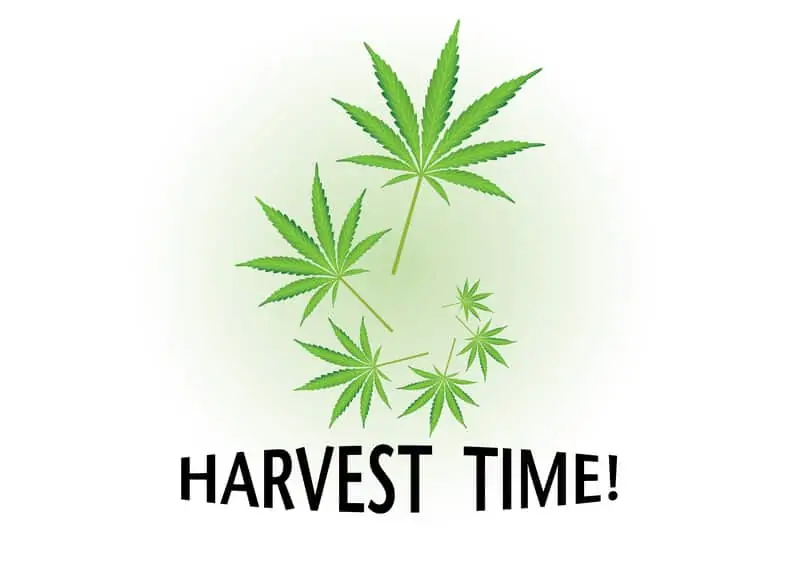
Knowing when to harvest weed can make or break your yield. There are a few different ways that you can tell if your marijuana plants are ready to be harvested.
While most of the tips below can help you determine the maturity of your plants, the most important thing to look for is trichome color.
Growing marijuana can be fun and rewarding but you need to know when to harvest marijuana plants.
1. Trichome Color
Trichomes are the small and bulbous resin glands that primarily grow on flower buds’ bracts but can also be found in lower concentrations on its leaves and stems. When your cannabis plants are ready to be harvested, about half of the trichomes should have a milky white color while the other half should have a vibrant amber color.
Trichomes start off clear and are at their weakest potency. As they gradually mature, they change in color, going from a milky and cloudy white to, eventually, an amber hue. Since these resin glands are difficult to see with the naked eye, you can use a magnifying glass or a jeweler's loupe to get a closer look.
2. Leaf Color
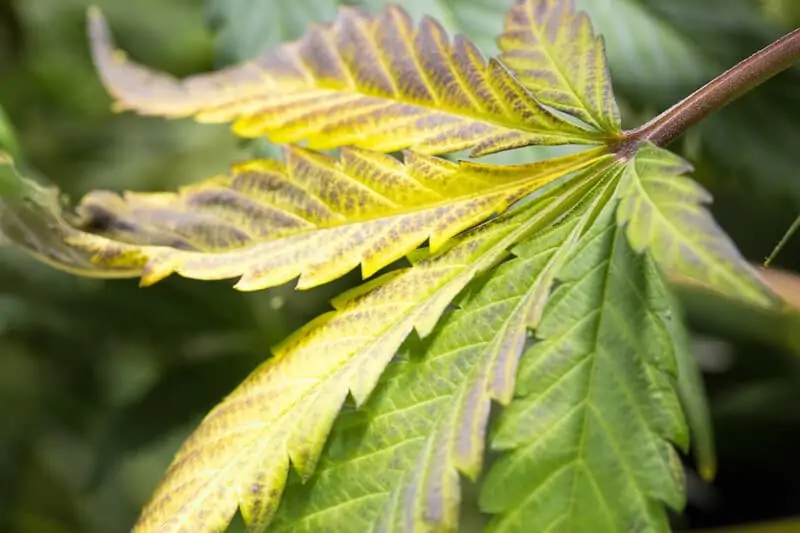
In some cases, especially when the plant has been flushed of its nutrients as it gets close to the harvest, the color of its leaves can transition from vivid green to a dull yellow. Why? Nitrogen gives the leaves their green hue. As the plant’s nitrogen content decreases toward the end of its life cycle, the leaves can begin to turn yellow and fall off.
Worried that the change in color and vigor of your plant’s leaves are a sign of poor health? Check out our blog resource: Evaluating cannabis leaves for health problems.
3. Curling Leaves
Similar to a change in leaf color, its leaves may begin to curl at its tips toward the end of its life. Don’t worry. This is normal. Since the plants may not be getting as much water as they were during the flowering period, the leaves may begin to dry off and wither away.
4. Pistil Color
In photoperiod marijuana plants, their pistils, their female sex organs that look like small hairs, can begin to change in color to a brown, orange, or reddish hue. Keep in mind, this method is not the most effective for determining your flower buds’ ripeness.
When to Harvest Weed – What If It's Too Early?
As mentioned above, it all depends on the color of your plant’s trichomes. If most of them are still clear, then it is way too early to harvest them. At this point, their cannabinoid and terpene production is just getting started.
While you may harvest your buds at this point, they will be considerably weaker in terms of potency, flavor, and aroma compared to fully mature buds. When is the best time to harvest weed?
When to Harvest Weed – What If It's Too Late?
Worried that you might overshoot your harvest? Is it ever too late to harvest? Ultimately, it depends on the color of the plant’s trichomes. When most of the bud’s trichomes have turned an amber color that means that your buds are overripe. They can become brittle and break off when handled.
If you harvest your buds when they have gone past their peak maturity, you can still consume them. Keep in mind, the buds’ cannabinoids can degrade over time. In particular, THC converts to CBN, a cannabinoid known to produce more sedative and couch-locking effects.
Harvesting cannabis is an often overlooked aspect of cannabis cultivation, especially with homegrown cannabis. Growers often harvest when it is too early to harvest their weed.
What to Do After Harvesting Marijuana
Once you have cut down all your flower bud branches, the work is not over. Your flower buds still need to undergo a trimming, drying, and curing process before they are ready for consumption. We have got you covered with our post-harvesting guides:
- How to dry weed for beginners
- How to cure weed fast
- The process associated with trimming marijuana
- The best ways to use leftover cannabis trim
After you have completed these essential post-harvesting tasks, you can store your cannabis buds in an airtight container in a cool, dry, and dark place to extend their freshness.
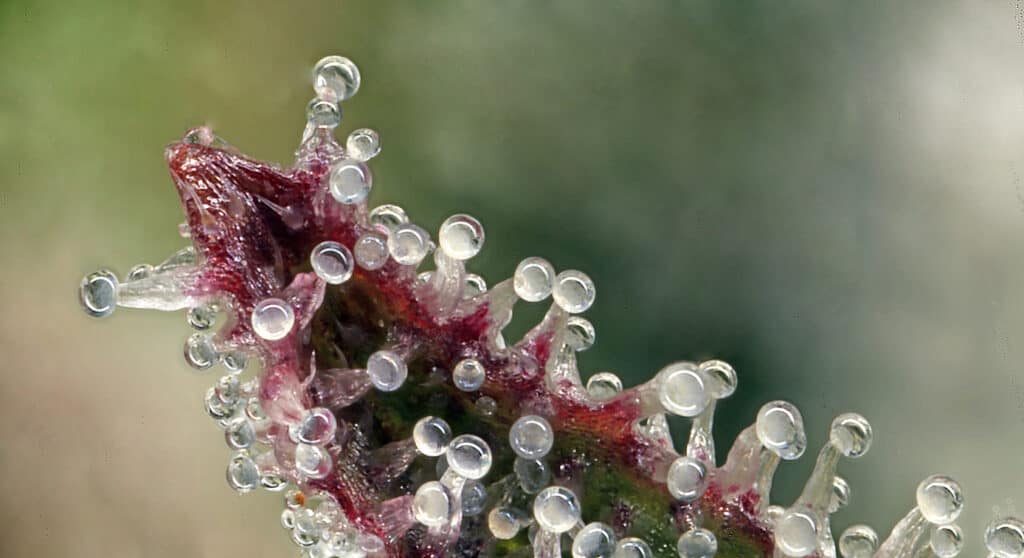
Expert Advice from a Cannabis Grower on How to Harvest Cannabis
Cannabis harvesting is a delicate skill that greatly affects the potency, aroma, flavor, and general quality of the finished product. Here are some crucial pointers for choosing the ideal time to harvest cannabis plants:
Recognize the three main growth stages of the Ccnnabis plant: Vegetative, Flowering, and Harvest.
While the flowering phase sees bud development, the vegetative phase concentrates on growth. The buds are ready to be harvested when they have developed to their fullest capacity.
Verify the Cannabis Plant Pistil: These are the little threads that resemble hair on the buds. They seem white in the early stages of flowering. They will gradually turn reddish-brown or orange as the plant ages. Generally, the best time for a balanced harvest is when 60–70% of the pistils have changed color. Waiting until 80–90% of the sample has changed color may produce a more soothing, sedative effect.
An examination of the trichomes reveals that these are the little, fungus-like structures that produce cannabinoids on the surface of the flower. Examine them thoroughly using a jeweler's loupe or a magnifying glass. This is particularly important when needing to know when to harvest weed.
Clear Trichomes: The plant is not yet fully developed.
Milky White Trichomes: This is typically the THC production peak, making it excellent for highest potency.
Amber trichomes: The presence of more CBN, which has a stronger sedative effect, is indicated by this.
Leaf Yellowing: Fan leaves of cannabis plants frequently begin to yellow and wilt as they near the conclusion of their life cycle. This organic occurrence signals the plant's redistribution of nutrients to the buds and the impending harvest.
If you've been using synthetic fertilizers, flushing the plants is essential before harvesting. Flushing entails giving the plants a week to ten days of plain water to flush away any lingering fertilizers. This guarantees a more streamlined, cleaner end result.
Think about the desired outcome: You can change the harvesting time to have a more energizing, balanced, or sleepy effect. Later harvests incline toward a soothing, couch-lock feeling, whereas earlier harvests typically have a more energizing impact.
Avert Early Harvesting: Early harvesting may result in diminished potency and yields. It's important to be patient and give the buds the space they require to mature properly.
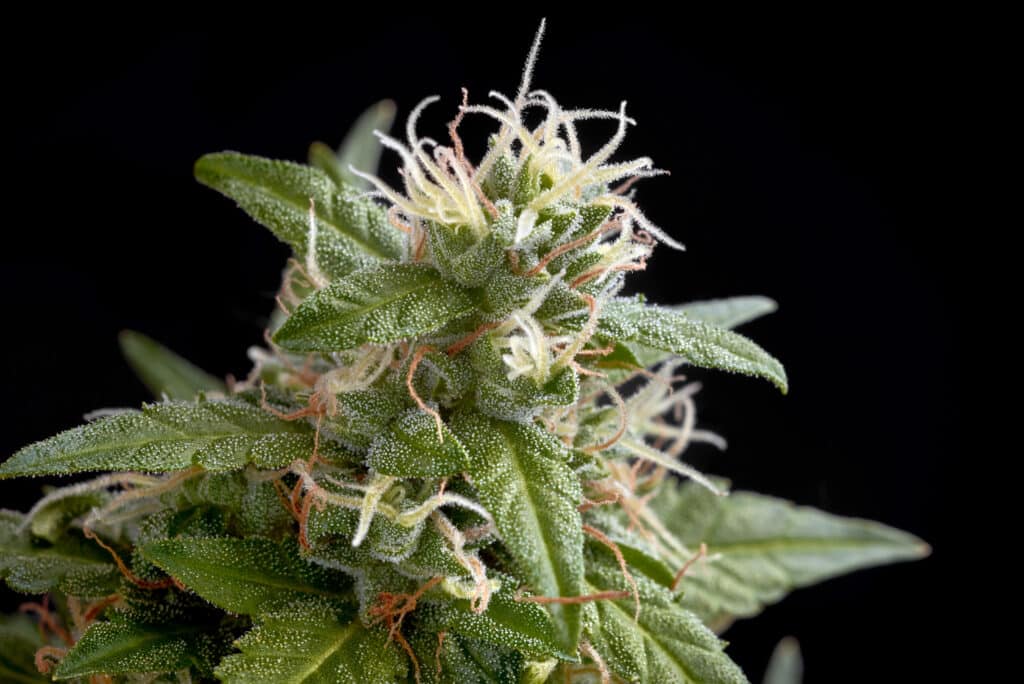
Environmental Elements: As harvest time draws near, make sure your plants are in a stress-free environment. The crop can be negatively impacted by things like drastic temperature changes, pest infestations, and rapid shifts in light.
Your Grow: Each strain and growing environment is particular to themselves.
You can improve your strategy over time by documenting your method, including the timing of your harvest and the outcomes.
Process following Harvest: The actual harvest is merely the start. To maintain the aroma, flavor, and potency of your cannabis, proper drying and curing are equally important.
Observation, knowledge, and patience are required to determine the ideal time to harvest cannabis. Cultivators may maximize quality and yield with the appropriate strategy, guaranteeing that the finished product meets or even exceeds expectations.
When should I know my weed plant is ready to harvest?

Determining when your cannabis plant is ready to harvest is crucial to obtaining the best quality buds. Harvesting too early can result in a loss of potency, while harvesting too late can lead to overly sedative effects or a degradation of THC into CBN. Here are several indicators to help you determine the optimal harvest window:
Pistils: These are the hair-like structures on the buds.
Early Stage: They will appear white and straight.
Mid Stage: As maturity approaches, they'll start curling and changing color to reddish-brown or orange.
Late Stage: When about 60-70% of the pistils have turned dark, it's a good time to harvest for a balanced THC level. If you prefer a more sedative effect, wait until 80-90% have changed.
Trichome Appearance: Trichomes are tiny, resin-secreting structures on the buds and leaves. A jeweler's loupe or a magnifying glass is needed to inspect them closely.
Clear Trichomes: The plant is not yet ready for harvest; THC levels are still low.
Milky White Trichomes: This is often considered the optimal time to harvest as THC levels are at their peak.
Amber Trichomes: As trichomes turn amber, THC is degrading into CBN, leading to more sedative effects. Depending on your preference, harvesting when 20-30% of trichomes are amber can give a more relaxing high.
Leaf Color: As cannabis plants near maturity, the fan leaves might start to yellow and wilt, indicating that nutrients are being relocated to the buds. This yellowing, especially if widespread, can signal that harvest time is near.
Strain-specific Harvest Time: Refer to the seed breeder's guidelines. Different strains have varying flowering times. For instance, Indicas might be ready to harvest after 8 weeks of flowering, while some Sativas can take up to 10-12 weeks.
Swelling of the Buds: Over the flowering period, you should notice your buds becoming denser and thicker. When the growth of new white hairs begins to slow down and the buds feel dense to the touch, it might be nearing harvest time.
Stem Thickness: Stems get thicker as the plant matures. If the stems of your main colas have notably thickened and become more robust, this can be an indicator of readiness.
Energy Transfer: As the plant reaches its end stages, the energy transfers from leaf and stem growth to the buds. This can be visually evident when you see a lot more growth in the buds compared to the rest of the plant.
What happens if I cut my bud too early?
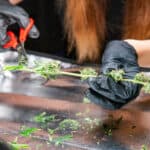
If you harvest your cannabis buds too early, several things can happen:
Reduced Potency: The THC and other cannabinoids are not fully developed in premature buds. When you harvest early, the plant hasn't had the chance to reach its maximum THC production potential. As a result, the effects of the consumed cannabis might be weaker or different than expected.
Diminished Yields: By cutting your buds early, you're limiting the plant's flowering potential. Buds tend to swell and gain a significant amount of their weight in the last weeks of flowering, so early harvesting can mean less overall product.
Less Developed Flavor and Aroma: Terpenes, which give cannabis its characteristic scent and flavor, continue to develop and evolve throughout the flowering stage. Early harvested buds may lack the full spectrum of terpenes, leading to a less aromatic and flavorful smoking or vaping experience.
Harsh Smoke: Early harvested buds can produce a harsher smoke. This is because the plant may still have high levels of chlorophyll, which has not yet broken down.
Different Effects: Early harvested cannabis tends to produce a more anxious and less refined effect when consumed. This is due to the imbalance in the cannabinoid and terpene profile, which hasn't reached its peak. Some users report a more “racy” or “edgy” high with early-harvested buds.
Faster Drying and Curing: Since young buds have a higher water content, they might dry out faster. This might seem like a positive aspect, but a rapid drying process can degrade the quality of the bud and lead to a harsher taste.
Potential for Mold: Because early buds can be denser with higher moisture content, there's a greater risk of mold development during the curing process if not dried properly.
If you suspect you've harvested your cannabis too early, there's no way to reverse the process. However, proper drying and curing can still optimize what you have. For future grows, it's a learning opportunity. Remember to be patient and observe the plant's signs to determine the best harvest window.
Should all hairs be orange before harvest?

No, not all hairs (pistils) need to be orange or amber before harvest. The color and curling of the pistils are just one of several indicators that growers use to gauge when a cannabis plant is ready for harvest, but it is not an absolute measure.
Generally:
White, Straight Pistils: Buds are still growing and maturing. Harvesting now would be premature.
60-70% Darkened Pistils: This is a common point for harvesting if growers are aiming for a high that's more uplifting and cerebral. The THC content is typically nearing its peak around this time.
70-90% Darkened Pistils: If you wait until this point, the buds will likely produce a more relaxing, body-centered high. This is due to the continued conversion of THC to CBN, a cannabinoid known for its sedative effects.
However, relying solely on pistil color can be misleading. A more accurate method for determining harvest readiness is examining the trichomes, the tiny resin-filled glands on the buds. As they evolve:
Clear Trichomes: Signify that the bud is still immature.
Milky White Trichomes: Typically the best time to harvest for maximum THC potency.
Amber Trichomes: This indicates a higher presence of CBN, leading to a more sedative effect.
What happens if you wait too long to harvest your weed?
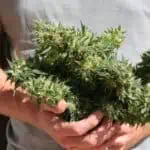
Waiting too long to harvest your cannabis can have several consequences:
Decreased THC Content: Over time, the THC in trichomes begins to degrade and convert into CBN (cannabinol). While THC has psychoactive properties that give users a euphoric “high,” CBN has more sedative effects. As a result, cannabis harvested too late might produce a sleepier, less vibrant high.
Altered Terpene Profile: The aromatic terpenes that give cannabis its distinct smell and flavor can also degrade if you wait too long. This can lead to a change in the aroma, flavor, and overall experience of the cannabis.
Reduced Potency: As THC degrades, the overall potency of the cannabis can diminish, leading to a weaker effect when consumed.
Increased Risk of Mold and Pests: The longer the buds remain on the plant, especially in humid conditions, the higher the risk of mold and pest infestations. This can ruin the crop and make it unsafe for consumption.
Overripe Buds: Just as fruits can become overripe, so can cannabis buds. Overripe buds may have an off taste and might not provide the desired effects due to changes in their cannabinoid and terpene profiles.
Less Appealing Bag Appeal: The aesthetic appeal of buds can decline if harvested too late. They might appear browner or less vibrant, affecting their market value and overall desirability.
Loss of Yield: In extreme cases, if you wait too long, the buds may start to die and drop off the plant, leading to a reduced yield.
It's essential to monitor your cannabis plants closely as they approach the expected harvest window.
Regularly check trichomes, pistils, and overall bud development to determine the best time to harvest based on the desired effects and characteristics.
Do I have to dry weed after harvest?
Yes, drying your cannabis after harvest is a crucial step in the post-harvest process. Drying accomplishes several essential objectives:
Preservation: Fresh cannabis buds contain a significant amount of moisture, which can lead to mold and bacterial growth if not dried. Proper drying helps to preserve your buds and prevents them from rotting.
Taste and Smoothness: The drying process helps in the breakdown of chlorophyll, which can give cannabis an unpleasant “grassy” taste if not adequately degraded. Properly dried cannabis will result in a smoother, more flavorful smoke or vapor.
Potency and Effects: Drying (and subsequent curing) allows for the continued decarboxylation of cannabinoids. This process transforms the non-psychoactive THCA into the psychoactive compound THC, enhancing the cannabis's potency.
Curing Preparation: Drying is the necessary precursor to curing, another critical post-harvest process. Curing further refines the flavor, aroma, and overall quality of the cannabis. It also helps in the maturation of cannabinoids and terpenes, providing a more refined experience for users.
Steps for Proper Drying:
Trimming: After harvest, you can either trim your buds while they're still wet (known as “wet trimming”) or after they've dried (“dry trimming”). The choice is up to the grower's preference.
Hanging: Hang the branches or whole plants upside down in a dark room with good ventilation. This can be done using wire, clothes hangers, or specialized drying racks.
Environment Control: Aim for a room temperature between 60-70°F (15-21°C) and a relative humidity of 50-60%. This creates an optimal drying environment. Using fans can help maintain consistent airflow, but don't point them directly at the hanging plants.
Check Regularly: Depending on conditions, drying can take anywhere from 5 to 15 days. Buds are ready for the next stage when small stems snap rather than bend. The outside of the buds should feel dry to the touch, but the inside will retain moisture, which will be redistributed during the curing process.
Curing: Once dried, buds can be further trimmed (if you opted for dry trimming) and placed in airtight containers for curing. This step can last several weeks to months and will further enhance the quality of the cannabis.
Skipping the drying process or rushing it can lead to cannabis that is harsh to smoke, less potent, and more prone to mold and bacterial contamination. Proper drying and curing are time-consuming but are essential steps to ensure the best quality product.
Can I harvest one bud at a time?
Yes, it is possible to harvest marijuana one bud at a time. This method is known as “selective harvesting” or “staggered harvesting.”
There are various factors that could influence a grower's decision, including:
Different Buds Maturate at Different Rates: Cannabis plants produce buds that develop at various rates. The cola buds at the top of the plant, which get the most light, typically mature more quickly than the ones at the bottom. You can give the less developed buds more time to mature while gathering the mature ones by selectively harvesting.
Increase Yields: After the top buds are harvested, the lower buds might develop bigger and denser by being given additional time to receive direct light.
Effects of testing: You might wish to test the effects of the buds at various stages of development, especially if you're a beginner or working with a novel strain. You can gather and sample buds at various stages of development thanks to selective harvesting.
Spreading Out Workload: Activities like harvesting, trimming, drying, and curing can be time-consuming. You can spread out the workload over a longer period of time by harvesting in stages.
Selective harvesting techniques:
Examine the Plant: Check the trichomes on the buds using a jeweler's loupe or magnifying glass. It's usually a good sign the bud is ready when they are primarily milky with some turning amber.
Additionally, keep an eye out for additional clues like the pistils' hue and curl.
Use Sterilized, Sharp Tools: Use sterilized, sharp scissors or pruning shears to limit the danger of disease and to produce a clean cut.
Cut With Care: Make sure not to harm nearby stems or foliage while clipping individual buds.
Procedure as Is: The same as if you were harvesting the full plant, you can trim, dry, and finally cure the bud after you've done so.
Keep in mind that while selective harvesting has some benefits, it also necessitates more frequent plant observation to establish the best time to harvest each bud. However, it can be a great method to increase production and quality if done carefully and with patience.
Should I cut fan leaves before harvest?
Fan leaf cutting is a fairly individualized choice that is influenced by the grower's preferences and the particulars of the grow. The following are the justifications for some farmers' decision to remove fan leaves before to harvest as well as the things to remember:
Why Fan Leaves Should Be Removed Before Harvest:
Improved Air Circulation: Removing huge fan leaves, especially in densely packed canopies, helps improve airflow around the buds. In the last phases of flowering, this enhanced circulation can lessen the danger of mold and bud rot.
Better Light Penetration: Lower buds may be shaded by some of the larger fan leaves; by removing these leaves, more light may enter those areas, thereby promoting the growth of the lower buds.
Lessening the number of leaves can facilitate and speed up the process of cutting and pruning buds when it is time to harvest.
Trichome Production Increased by Stress: Some growers think that a small amount of stress, like that caused by defoliating, can increase trichome production in the days leading up to harvest, possibly increasing potency. However, there is disagreement on this, and the outcomes differ.
Considerations:
Potential Stress: Removing a lot of fan leaves at once, in particular, can stress the plant. It might not have enough time to recuperate if done too quickly or too late in the flower, which might potentially impact bud development.
Loss of Energy Reserves: The plant's solar panels and energy reserves are its leaves. A plant's capacity to photosynthesize and store nutrients can be harmed by a large number of removals, which may have an effect on the bud's development.
Timing: Instead of removing it all at once, you might want to remove the fan leaves gradually throughout the weeks coming up to harvest. This technique, which gives the plant time to respond and is frequently referred to as “lollipopping” when applied to the lower half of the plant.
Differences amongst Strains: Different Strains may react differently to pre-harvest defoliation. Understanding the particular requirements and qualities of the cannabis strain you are growing is crucial.
Growing Conditions: The increased ventilation caused by removing the leaves is especially advantageous in extremely humid situations because mildew and bud rot are more likely to occur there. The plant might benefit from keeping its fan leaves, though, in extremely dry situations to prevent excessive drying out.
As a result, the decision to clip fan leaves prior to harvest will rely on your individual objectives, the growing conditions, and your past experiences. If this is the first time you've thought about it, you can decide to test the method on a single plant or branch to see how it behaves before using it on your entire crop.
What equipment do I need to harvest my weed plants?
Sharp scissors or pruning shears are needed to cut the branches, trimming scissors are used to shape the buds, gloves are worn to protect your hands from resin, and drying racks or lines are used to hang the buds to dry. To figure out the best time to harvest cannabis, you also need a magnifying glass to check the color of the trichomes.
How do I dry and cure my cannabis after harvesting?
To dry cannabis, hang the cut twigs upside down in a controlled environment. The best place is a dark, well-ventilated room that is between 60°F and 70°F (15°C and 15°C) and has a humidity level of 45 to 55 percent. It usually takes between 7 and 14 days to dry. When the stems snap instead of bend, the buds are ready.
Once the buds are dry, put them in sealed containers, like glass mason jars, and fill them up to ¾ of the way. For the first week, open the jars a few times a day for a few minutes each time to let air in and any wetness out. After that, only open every few days at most. Curing usually takes between two and four weeks, but it can go on longer to get better taste and strength.
What are common mistakes to avoid when harvesting cannabis?
Some common mistakes are picking too early or too late, which can lower the quality and potency; not drying and curing properly, which can cause mold or mildew to grow; and trimming too roughly, which can damage the trichomes. Also, problems can happen if there isn't enough air flow while drying, so make sure there is plenty of it.
How To Harvest Bigger Buds
Are you ready to unleash the full potential of your cannabis harvest?
Get ready to maximize your yield and grow the biggest, most potent buds. With our expert tips and insider knowledge, you'll be well on your way to creating a thriving cannabis garden.
Let's dive in and unlock the secret to growing massive, trichome-rich buds every time.
Steps to Take For Growing and Harvesting Bigger Marijuana Buds
Choose High-Yield Cannabis Strains
Starting with high-yield genetics is the best way to grow big buds.
While indicas tend to grow shorter and bushier than sativas, this isn’t always the case. Research strain growing information (height, yield size, etc.) of indica, sativa, and hybrid varieties before committing to a strain.
Research reputable seed vendors and consider the following factors to choose the right genetics:
- Availability of seeds or clones: Seeds are obtained from the pollination of a female plant by a male pant and are used to grow new plants. On the other hand, clones are cuttings taken from a mature “mother” plant and used to grow new plants with identical genetics.
- Desired effects of the flowers: Different cannabis strains affect the human body differently. Some strains are known for their relaxing properties, while others are known for their energetic and uplifting effects.
- Desired length of time from planting to harvest: The length of time from planting to harvest can vary between strains. Some strains have a shorter flowering period and are ready for harvest in as little as 8-9 weeks, while others may take longer.
- Desired yield: Yield is a measure of the amount of buds produced by a cannabis plant. High-yield strains are known for producing large amounts of buds, but it's important to keep in mind that yield also depends on growing conditions and the care given to the plants.
- Growing environment: The growing environment can have a significant impact on the yield and quality of cannabis plants. Choose a strain that is well-suited to your growing conditions, including temperature, light, and humidity.
- Space requirements: Some strains are more compact and better suited for small grow spaces, while others are larger and need more room to grow.
Pro tip: For new growers, we recommend starting with 1-2 indica clones, since indicas are usually easier and faster to grow than sativas. Autoflowering strains are also a good option but aren’t as high-yielding as traditional photoperiod strains.
High-yielding strains include:
- Bid Bud
- Northern Lights
- White Widow
- Blue Dream
- Cheese Quake
- Purple Trainwreck
- Critical Kush
- Original Glue
- Thai Stick
- Super Silver Haze
- Amnesia Haze
Further Reading: Learn more about these high-yielding strains with our blog post.
Grow Hydroponic Weed
Hydroponic cannabis grows can produce bigger yields than traditional grow systems. Many commercial growers rely on hydroponic systems like deep water culture (DWC), ebb and flow, and nutrient film technique (NFT), to grow bigger and better plants.
- Deep Water Culture (DWC) System: The DWC system involves suspending the roots of the plants directly into a nutrient-rich solution. This system provides plants with a consistent water supply and nutrients, leading to rapid growth and high yields.
- Nutrient Film Technique (NFT) System: The NFT system involves circulating a thin film of nutrient-rich water over the roots of the plants. This system requires careful monitoring to ensure the correct balance of water and nutrients but can result in fast growth and high yields.
- Ebb and Flow System: The ebb and flow system involves periodically flooding the grow tray with nutrient-rich water, allowing the roots to soak up the nutrients and draining the water back into a reservoir. This system is easy to set up and maintain, making it a popular choice for home growers.
- Aeroponic System: The aeroponic system involves misting the roots of the plants with a nutrient-rich solution. This system provides an oxygen-rich environment for the roots, leading to rapid growth and high yields.
- Drip Irrigation System: The drip Irrigation system involves dripping a controlled amount of nutrient-rich water directly onto the roots of the plants. This system is efficient and can result in high yields, but requires careful monitoring to avoid over- or under-watering.
Generally, the idea of hydroponic systems is to provide plant roots with a nutrient-rich solution in a highly-oxygenated environment. Plant roots are supported by an inert medium like Rockwool or hydroton clay pebbles instead of soil. In this environment, plants can absorb nutrients and minerals more effectively.
Growing cannabis plants hydroponically can be difficult for first-time growers. However, as long you understand how to manage pH and provide plants with the right nutrient solution mix, you can grow big buds with minimal issues.
A major aspect of having a successful hydroponic garden is the cleanliness of the environment to reduce the risk of disease.
Give Plants Plenty of Light
Cannabis plants thrive in a well-lit environment, which promotes photosynthesis. Choosing the best grow lights for your cannabis garden depends on various factors, including your budget, the grow space, the stage of life of the plant, and your desired yield. The size of your harvest will depend on the amount of light your plants receive.
One of the main types of lighting used in cannabis cultivation is HID (High-Intensity Discharge) lighting. HID lighting comes in two forms, Metal Halide (MH) and High-Pressure Sodium (HPS), and provides a strong, full-spectrum light that is ideal for the flowering stage of growth.
However, HID lighting is energy-intensive and can produce a significant amount of heat, making it important to choose the right size for your grow space and provide proper ventilation.
For HPS lights, consider these recommendations for HPS wattage and distance between lights and plants:
- 150 watts: 8-12 inches
- 250 watts: 10-14 inches
- 400 watts: 12-19 inches
- 600 watts: 14-25 inches
- 1000 watts: 16-31 inches
Another type of lighting that is becoming increasingly popular among cannabis growers is LED (Light-Emitting Diode) lighting. LED lighting is energy-efficient and generates very little heat, making it ideal for small grow spaces. LED lights come in various spectrum options and can be customized to provide light specific to the stage of growth.
When choosing lighting for your cannabis grow, it's important to consider the lights' wattage, spectrum, and coverage. You'll want to provide enough light to cover your entire grow area, with a higher wattage being necessary for larger grow spaces. The light spectrum should match the growth stage, with different spectrums used during the vegetative and flowering stages.
Maintain Optimal Temperature and Humidity
Getting the temperature and humidity just right for your plants can make a big difference in yield, bud size, and trichome density. We recommend avoiding going over 80º F during the flowering phase.
For seedlings, the temperature should be around 77º F during the day and 70º at night with a 65-80% humidity. During the vegetative stage, temperatures can range between 71-82º F in the day and 64-75º F at night with a 55-70% humidity.
In the early flowering stage, the plant thrives in temperatures between 68-78º F in the day and 61-72º F at night with 40-50% humidity. In the late flowering stage, keep the temperatures between 64-I’m 75º F in the day and 61-68º F at night with 30-40% humidity.
The excess humidity and heat can increase the risk of bud rot and evaporate the heat-sensitive, aromatic terpenes. Extra chilly temperatures can slow down bud growth and create wispy nugs.
To maintain optimal temperature and humidity levels, it is important to invest in a temperature and humidity control system.
This can be as simple as a thermometer and hygrometer to monitor the temperature and humidity levels or as complex as a climate control system with automatic adjustment capabilities.
Remove Male Cannabis Plants
Before growing marijuana buds to get them bigger, you need to understand that buds developduring the flowering stage. Because the buds have a higher level of THC content, it is essential to get them as big as you can. However, there are some differences between the male and female plants, which you need to know too.
Female marijuana plants produce buds with a higher level of THC than male plants. Male marijuana plants do not produce cannabis buds but can produce leaves and stems with minimal trichomes, although you can still smoke them.
Because the male buds have so much pollen, you have to be careful not to allow female plant pollination. If the female plant gets pollinated, then the marijuana plant will begin to produce seeds instead of buds and have a lower level of THC.
“
There are over 300,000 jobs in the cannabis industry. CTU trained me for one of them!

Makes $24.50 @ THC +
The marijuana buds of the female plant will start to show within two weeks after the buds of the male plant show up. You should focus your attention on the female buds as they are superior tomale pollen sacs.
Further Reading: How to Determine Male vs. Female Marijuana.
Prune Cannabis Plant Leaves
Pruning cannabis plant leaves is an important part of growing and harvesting bigger marijuana buds. By removing yellow, damaged, or infected leaves, you can increase the overall health and vigor of your plants, leading to better yields and more potent buds.
Pruning cannabis plant leaves has several benefits. By removing damaged or yellow leaves, you can reduce the risk of mold and mildew and prevent the spread of disease or pests. Additionally, pruning can increase the amount of light and air reaching your plants' lower parts, promoting better growth and leading to bigger buds.
Pruning can help your marijuana plant eliminate unnecessary foliage and focus on growing its most critical components.Start by getting rid of the dry leaves. Look for discoloration of the leaves so you know which ones to remove.
To properly prune your cannabis plants, you'll need a sharp pair of pruning shears or scissors. Cut the leaves close to the stem, being careful not to damage the plant or leave any stubs. After pruning, dispose of the removed leaves and sanitize your pruning tools to prevent spreading disease or pests.
Even though you will remove those leaves, you don’t have to discard them, but you can keep the leaves for curing because the discolored leaves still have a sufficient level of THC content. You use them for recreational smoking while you wait for your bigger marijuana buds.
Train Your Marijuana Plants
Plant training allows you to manipulate how your cannabis plant grows. Plant training techniques range from low-stress training (LST) to high-stress techniques (HST). Plant training usually does not require expensive equipment or extensive training. Consider using LST and HST on your plant, including:
- Super cropping
- Screen of green (SCROG)
- Topping
- FIMing
- Manifolding
- Defoliation
For example, topping your female marijuana plants involves removing the top of the main stem of your vegetative plant. Topping a cannabis plant causes additional branches to grow and produce more buds. It also saves the plant energy and helps with pruning.
Further Reading: 7 Methods of Training Cannabis Plants.
Use the Right Ratio of Nutrients
Another thing to consider is using the best nutrients for your marijuana plant throughout its vegetative and flowering stage. Nutrients should be chosen for each phase, the flowering phase. Be careful what nutrients you use during the flowering stage.
To get bigger marijuana buds, make sure the plant receives enough phosphorus, nitrogen, and potassium. Phosphorus is usually most of what your marijuana plant craves during this stage. To get enough phosphorus for your plant, you could mix water and wood ash and apply them to your plant.
Harvest During Peak Maturity of Trichomes
Harvesting your cannabis plants at the right time is crucial for getting the best yield and potency. One of the most important factors to consider is the maturity of the trichomes on the buds. Trichomes are the small, sticky, glandular structures that cover the buds and contain most of the plant's cannabinoids, terpenes, and other beneficial compounds.
To determine the best time to harvest, you'll need to examine the trichomes under a magnifying glass. When the trichomes are clear, the buds are not yet fully mature, and you'll get a more energetic, uplifting high.
As the trichomes start to turn cloudy, the buds are reaching peak maturity, and you'll get a more relaxing, sedative effect. When the trichomes turn amber, the buds are starting to degrade, and you'll get a more couch-locking, sleep-inducing high.
It's important to note that the desired effects will vary depending on personal preferences, so you'll need to experiment to determine what works best for you. In general, most growers harvest when most trichomes are cloudy, providing a good balance between potency and taste.
When harvesting weed, handle the buds gently, as they're delicate and can easily be damaged. You should also dry and cure the buds properly, as this will help to preserve the potency and improve the flavor of the buds.
Learn How to Grow Weed at Cannabis Training University
Do you want to learn more cannabis harvesting and post-harvesting tips? Are you ready to learn from the top weed growers in the industry? Enroll in Cannabis Training University’s cannabis college courses to get a complete cannabis education on weed cultivation and so much more.
Enroll at CTU and see many more ready for harvest pictures of cannabis for your growing needs! Now you know the plants when to harvest cannabis needs and it's time for you to enroll and become a master cannabis grower! Earn your master cannabis grower certification online today!

Luis Cordova
Luis Cordova is a distinguished author, and renowned expert in cannabis cultivation, who possesses a Master's degree in Plant Biotechnology and Pharmaceutical Science. As a valued contributor to highly esteemed publications such as Cannabis Training University and Maximum Yield Magazine, Luis has emerged as a trusted source of guidance and knowledge in the cannabis industry. Having written thousands of informative articles, Luis is widely recognized for his comprehensive expertise on cultivating cannabis, both indoors and outdoors.


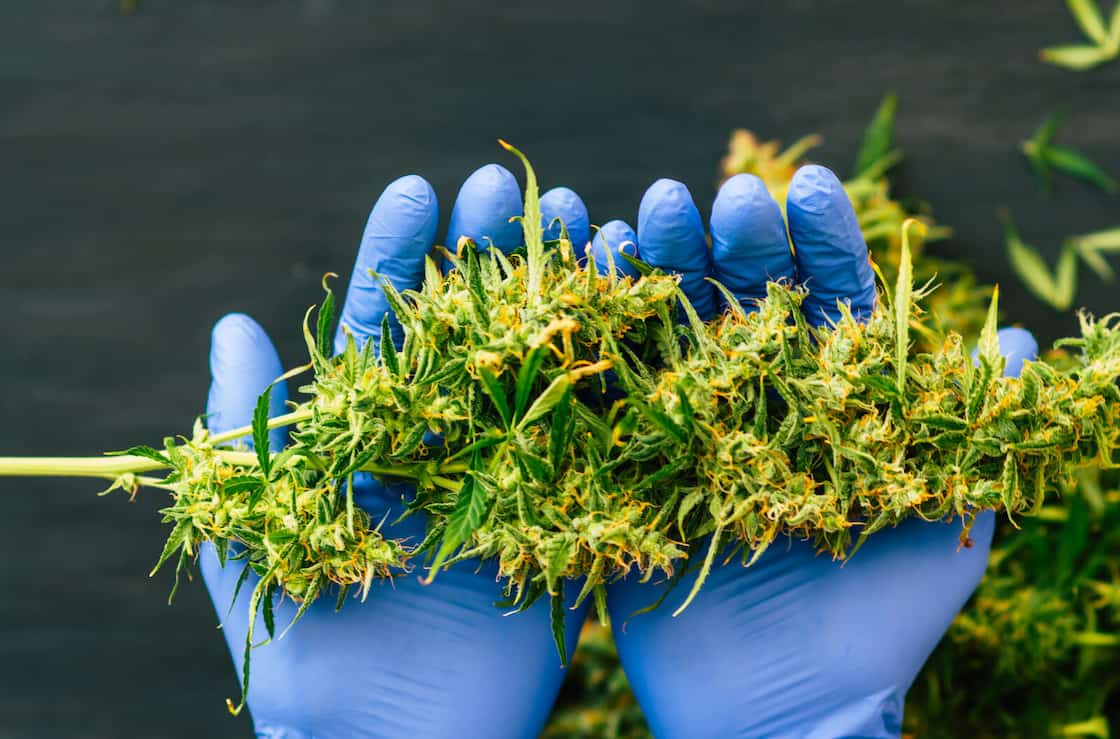






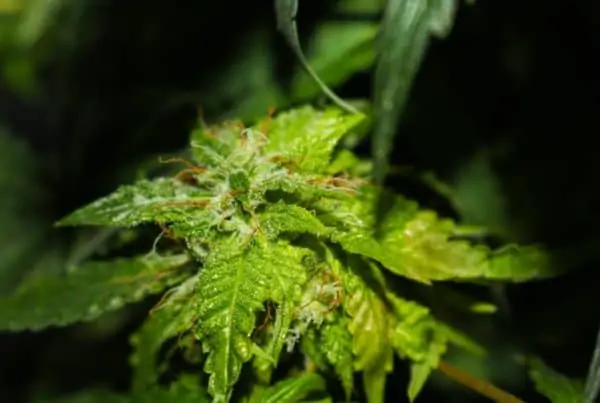
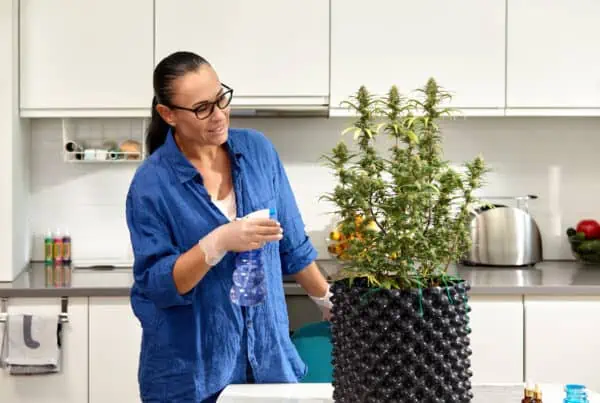

 Jeff was involved in an accident where he endured a traumatic brain injury. He had a week-long stay in ICU where brain surgeons
Jeff was involved in an accident where he endured a traumatic brain injury. He had a week-long stay in ICU where brain surgeons  100% risk free money back guarantee within 48 hours after purchase if student has not completed any of the courses or exams.
100% risk free money back guarantee within 48 hours after purchase if student has not completed any of the courses or exams.